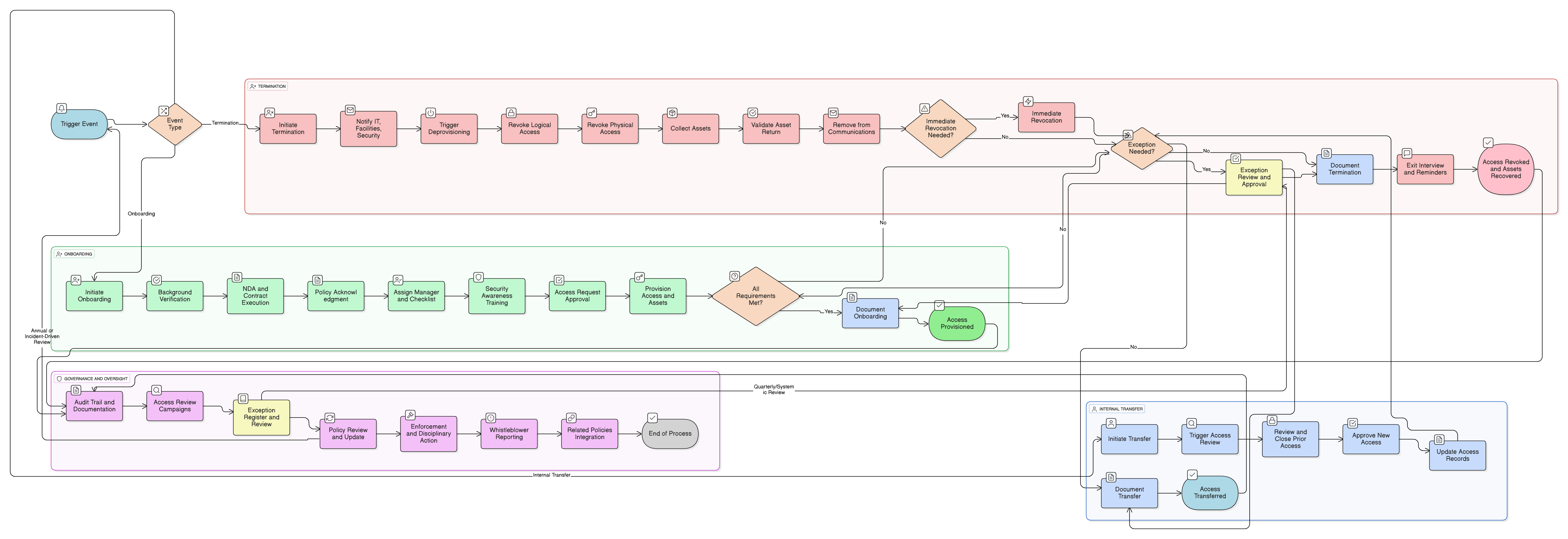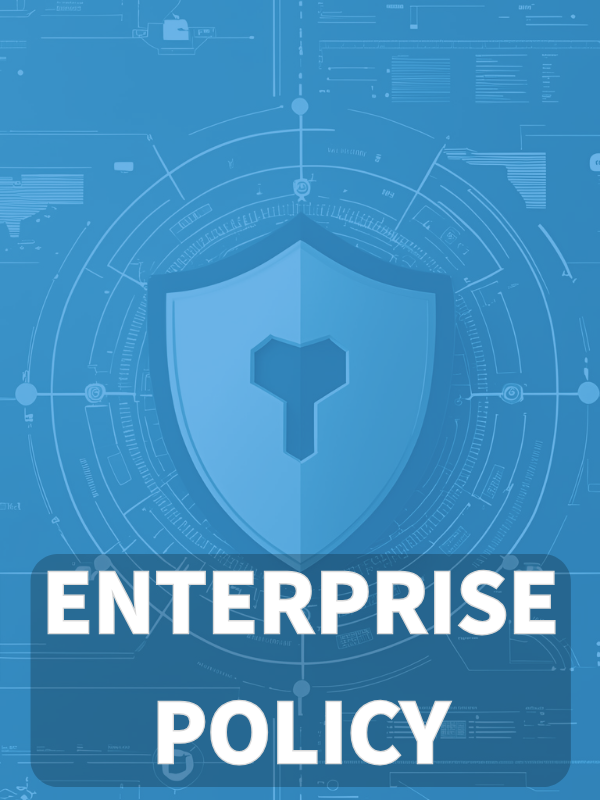Overview
This policy establishes strict procedures for secure onboarding, internal transfers, and terminations, enforcing access control, asset recovery, and audit trails aligned with major security and privacy standards.
Secure Access Lifecycle
Standardizes onboarding and termination to ensure timely, risk-based access provisioning and revocation.
Comprehensive Asset Control
Mandates asset issuance, tracking, and recovery to prevent losses and data leakage during personnel changes.
Regulatory Compliance
Aligns with ISO/IEC 27001, GDPR, NIST, NIS2, DORA, and COBIT for robust legal and security compliance.
Read Full Overview
Policy Diagram

Click diagram to view full size
What's Inside
Scope and Rules of Engagement
Onboarding and Offboarding Workflows
Asset Recovery and Validation
Immediate Access Revocation Requirements
Exception and Risk Treatment Process
Audit Trail and Documentation
Framework Compliance
🛡️ Supported Standards & Frameworks
This product is aligned with the following compliance frameworks, with detailed clause and control mappings.
| Framework | Covered Clauses / Controls |
|---|---|
| ISO/IEC 27001:2022 | |
| ISO/IEC 27002:2022 | |
| NIST SP 800-53 Rev.5 | |
| EU GDPR |
Article 5(1)(f)Article 25Article 32Recital 39
|
| EU NIS2 | |
| EU DORA | |
| COBIT 2019 |
Related Policies
Information Security Policy
Establishes the organization's security objectives, including personnel access governance.
Access Control Policy
Provides operational requirements for assigning and revoking system and physical access based on onboarding and termination triggers.
Acceptable Use Policy
Requires acknowledgment during onboarding and supports enforcement after termination.
Risk Management Policy
Ensures that user access and transition risks are evaluated and mitigated in line with ISMS principles.
User Account And Privilege Management Policy
Governs the technical controls for provisioning and deprovisioning in support of this policy.
About Clarysec Policies - Onboarding and Termination Policy
Effective security governance requires more than just words; it demands clarity, accountability, and a structure that scales with your organization. Generic templates often fail, creating ambiguity with long paragraphs and undefined roles. This policy is engineered to be the operational backbone of your security program. We assign responsibilities to the specific roles found in a modern enterprise, including the CISO, IT Security, and relevant committees, ensuring clear accountability. Every requirement is a uniquely numbered clause (e.g., 5.1.1, 5.1.2). This atomic structure makes the policy easy to implement, audit against specific controls, and safely customize without affecting document integrity, transforming it from a static document into a dynamic, actionable framework.
IAM Integration for Automated Workflows
Enforces IAM platform use for access provisioning, revocation, and audit trails, reducing errors and supporting automated onboarding/offboarding.
Immediate Risk-Driven Revocation
Requires privileged and high-risk account deactivation within four hours, minimizing exposure from critical roles and departures.
Frequently Asked Questions
Built for Leaders, By Leaders
This policy was authored by a security leader with 25+ years of experience deploying and auditing ISMS frameworks for global enterprises. It's designed not just to be a document, but a defensible framework that stands up to auditor scrutiny.
